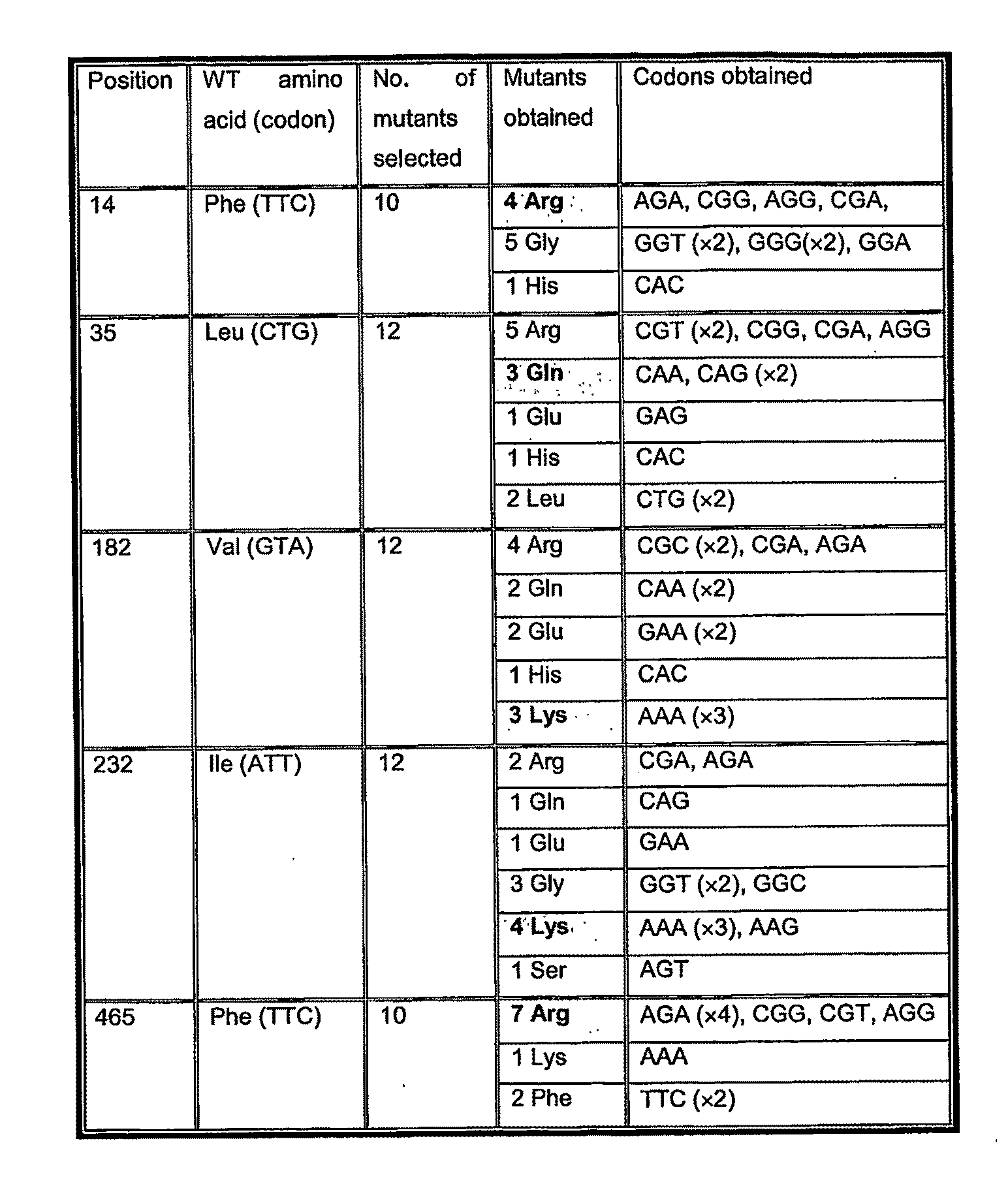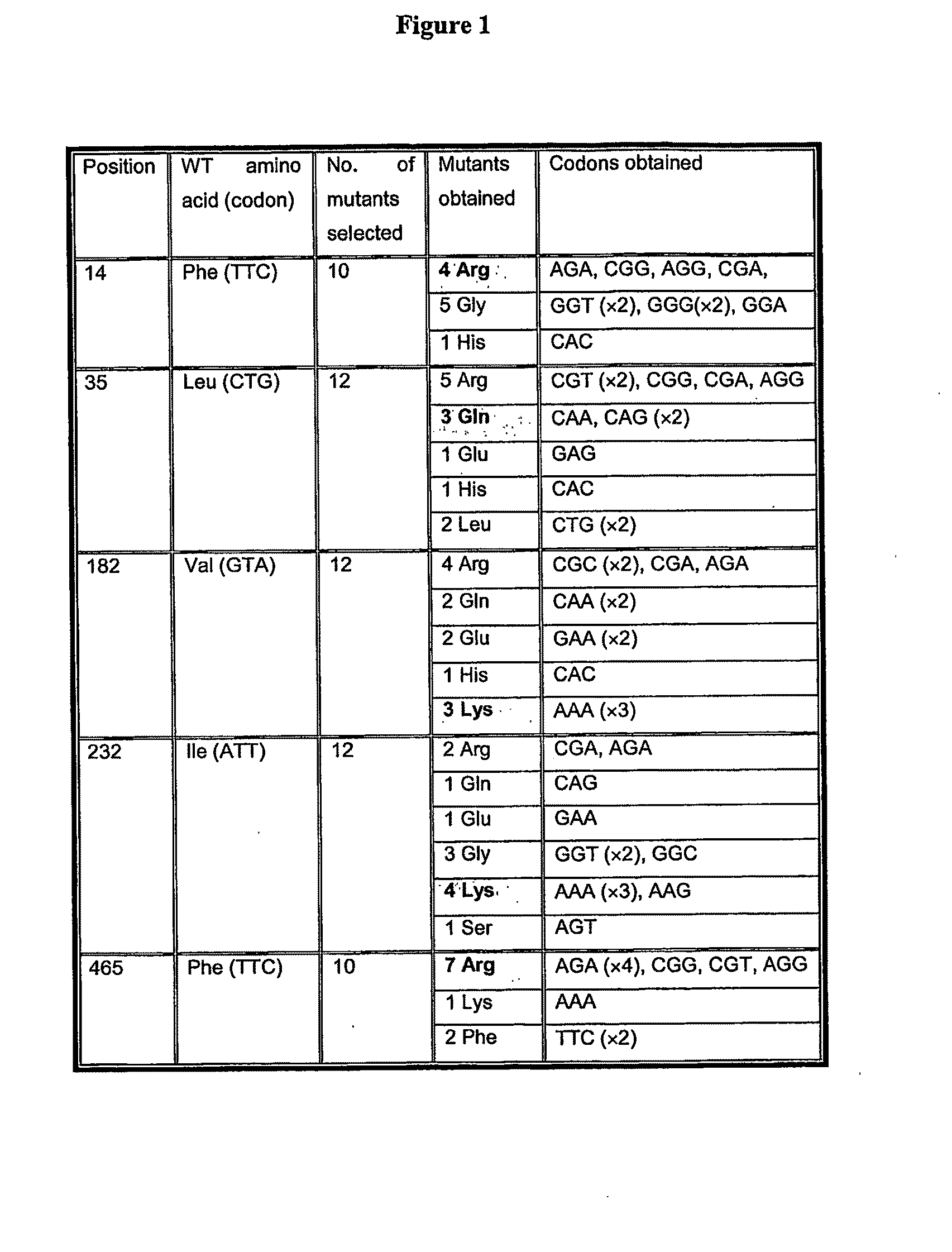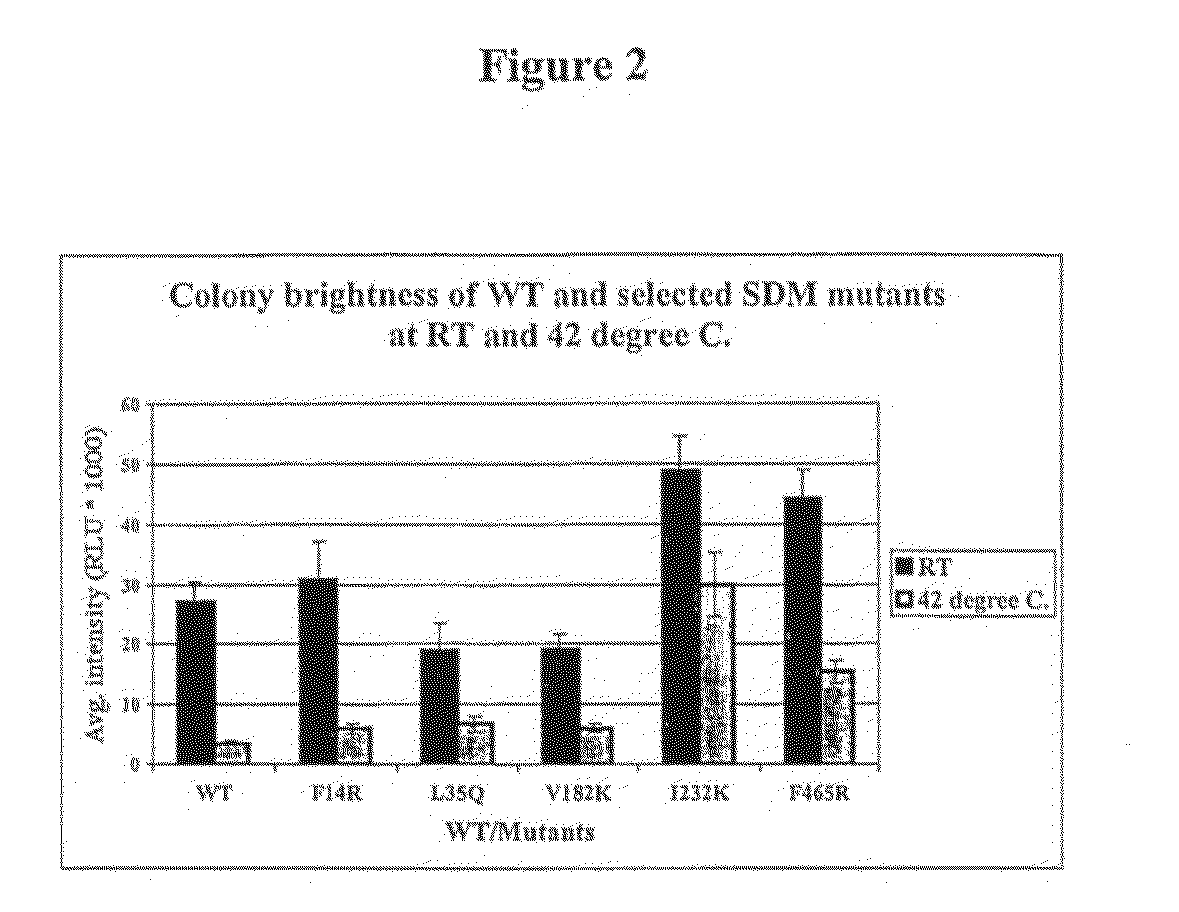PH Tolerant Luciferase
a luciferase and tolerant technology, applied in the field of ph tolerant luciferase, can solve the problems of reducing detectable light signals in non-optimum ph conditions, bathochromic shifts have a considerable negative impact on the utility of firefly luciferases in a whole range of applications, and bathochromic shift is undesirabl
- Summary
- Abstract
- Description
- Claims
- Application Information
AI Technical Summary
Benefits of technology
Problems solved by technology
Method used
Image
Examples
examples
1. Mutagenesis, Screening and Selection of Luciferase Mutants
[0080]Positions F14, L35, V182, I232 and F465 in Photinus pyralis luciferase were chosen for mutagenesis as have been previously shown to be amenable to changes without affecting the catalytic activity (Tisi, L. C. et al., (2001), “Mutagenesis of solvent-exposed hydrophobic residues in firefly luciferase”, In. Case, J. F., et al (Eds.). Proceedings of the 11th International Symposium on Bioluminescence and Chemiluminescence, pp. 189-192, World Scientific, Singapore). These were mutagenised randomly to eight hydrophilic amino acids using semi-random SDM. Resulting colonies were screen at room temperature and after they have been incubated at 42° C., which facilitated the selection of potentially thermo-stable mutants. From the first round of screening, between 10 and 12 mutants were selected and sequenced (FIG. 1). From these, a second round of screening allowed the selection of the brightest and / or most apparently thermo-s...
PUM
| Property | Measurement | Unit |
|---|---|---|
| pH | aaaaa | aaaaa |
| temperature | aaaaa | aaaaa |
| temperature | aaaaa | aaaaa |
Abstract
Description
Claims
Application Information
 Login to View More
Login to View More - R&D
- Intellectual Property
- Life Sciences
- Materials
- Tech Scout
- Unparalleled Data Quality
- Higher Quality Content
- 60% Fewer Hallucinations
Browse by: Latest US Patents, China's latest patents, Technical Efficacy Thesaurus, Application Domain, Technology Topic, Popular Technical Reports.
© 2025 PatSnap. All rights reserved.Legal|Privacy policy|Modern Slavery Act Transparency Statement|Sitemap|About US| Contact US: help@patsnap.com



